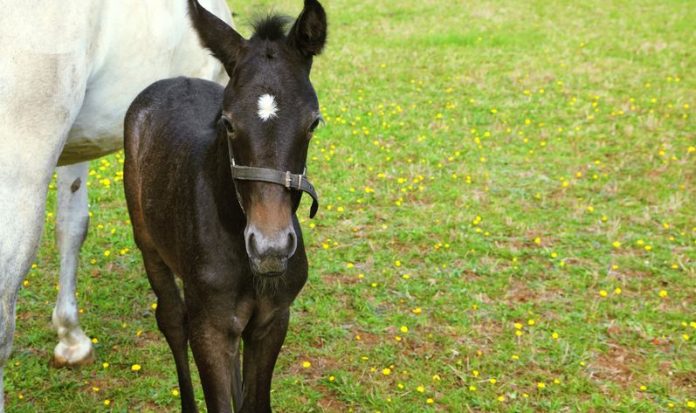Stall kicking is one the single worst habits your horse can develop. Its destructive not only to your horse, but also to your barn and to your peace of mind!
Most horses that are stall kickers stand with their hindquarters close to the wall and continuously kick the wall with one of their legs while the head moves in either a circular, up and down or side-to-side motion.
Others horses may kick anytime someone is in the barn trying to get attention, food or both.
Another style of stall kicker may rock back and forth several times and then release a big kick with both hind legs at once.
Often times there are many bursts one after another which can destroy your stall wall in a single kicking session not to mention the severe and extreme damage that can be done to your horses hind legs.
If you suspect your horse of being a stall kicker, one thing to look out for is a loose, shifted or missing shoe.
In addition to certain biological predispositions to stall kicking, lack of exercise, too much food or constantly changing horses in neighboring stalls are also contributing factors that could cause your horse to become a stall kicker.
Kicking is a natural method of play for horses so stall kicking may begin as a normal behavior but can often times very quickly escalate into an obsessive and destructive habit.
Stall kicking can also be a learned behavior from neighboring horses; sometimes it can even become a completive game between your horses.
The first thing you need to do if one of your horses is a kicker is to fully examine their feeding and exercise regimens.
All of your horses should have active, sustained exercise at the very least five times every week.
Active, sustained exercise includes lunging, driving, or riding. Your horse’s food should be custom tailored to meet his energy needs.
An under exercised and overfed horse is the most likely candidate for developing into a stall kicker.
If your horse has developed a stall kicking habit and you have already adjusted their eating and exercise regimens and that has not helped the problem then it might be time to try something else.
Be aware that when working around a horse that is a stall kicker, your horse could hurt you and may end up hurting himself. It may be in your best interest to get professional help to deal with the issue.
There are a few common remedies that professionals use to deal with stall kickers (and that you may want to try yourself if you’re qualified to do so).
Kicking chains are often used. A chain is suspended from a leather strap thats attached above the hock.
The chain reprimands the horse each time he kicks. Another, easier, self-training method is putting on a specially shaped horseshoe.
The horseshoe should be round and brought together at the heels so it fits over the leg at the cannon and is able to slide down over the fetlock where it will rest on the coronary band. Anytime your horse kicks, the shoe bangs against the pastern.
These methods may seem a little extreme, even inhumane, however, keep in mind that the horse is severely hurting himself by stall kicking and these methods are intended to stop to the destructive behavior for your horses benefit.
Remember, before you try any method to correct your horses stall kicking, the first thing you need to do is examine your horse’s diet and exercise routine.

